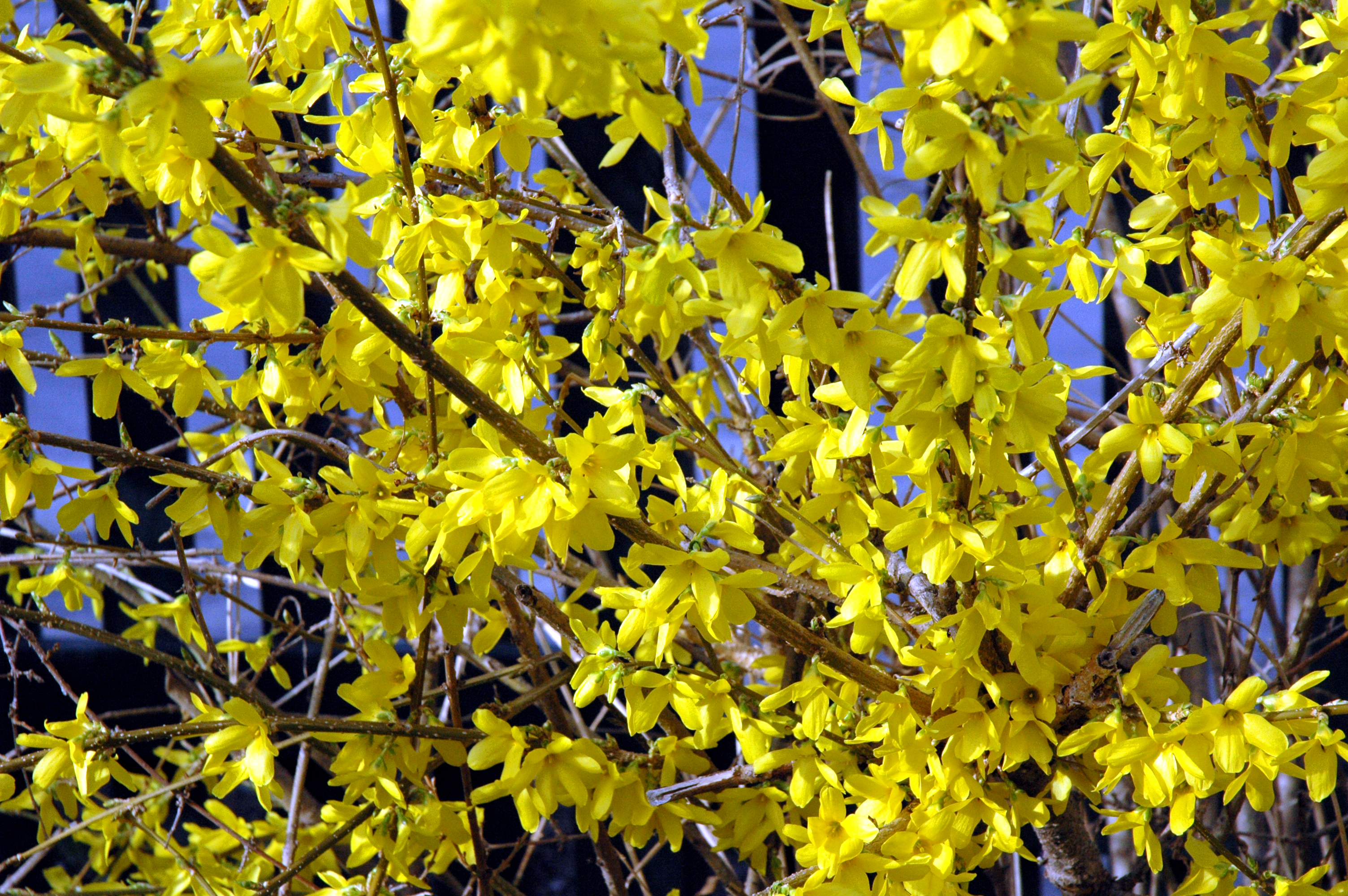 |
| http://lmo.wikipedia.org/wiki/Forsythia |
Pagan Blog Project - week 11 - F#1 - Forsythia
Spring-time
is flower time in North Carolina (and other places, too). From February to
late-summer the flowers begin to bloom – cherry blossoms and pear trees,
hyacinths, daffodils and narcissus, crocuses, crepe myrtle, periwinkle… and
then as the summer nears there are gardenia, hydrangeas, roses, magnolia, and
then in July, day lilies.
For me, though, the first sign of the coming springtime is the shocking explosion of bright yellow forsythia blossoms. The house I used to live in hat a forsythia bush out front, and I always knew spring had finally come when I'd walk out onto my porch one morning and be greeted with a scrappy little bush full of lovely, sun-shining blossoms.
 |
| http://fr.wikipedia.org/wiki/Forsythia |
There's not a lot of lore out there for forsythia, though I'm sure it's special in more ways than typically realized. Forsythia
is part of the olive family, so this flowering shrub could be seen to be sacred
to deities like Athena or others who love the olive tree, olives, and oils.Yellow itself can be a magical color for joy and birth and new beginnings. The blossoms have four petals, and four is an incredibly sacred number, representing everything from the four directions to balance to the elements.
Forsythia is a pretty hardy plant, which can thrive nicely once it takes root. The blossoms
are bright yellow and happy. They can be a bit delicate during a rain, which is
quite common in the springtime, especially in North Carolina. While the
blossoms might no longer be on the thin branches, they litter the ground in a
confetti of sunshine. And while the blossoms droop in the rain, they serve to shield the delicate fruits and seeds of the plant itself, thus having protective qualities and associations.
 |
| http://tribes.tribe.net/yourdailyflower/photos/f989fef2-6ea9-4e36-8ae8-ae03049c42e3 |
This
lovely blooming shrub originally comes from the Far East, and the fruit and
seeds were allegedly used medicinally. This plant
is said to be good for inflammation, colds, flues, and allegedly has anti-viral properties. The
little seedpods are often combined with honeysuckle or echinichea to make an
immunity boosting tea.
In
the Victorian “language of flowers,” forsythia is a symbol of anticipatin. In
many ways this is especially pertinent for this time of year. Aren’t you in
anticipation for warning weather? For spring break? For the blooms and blossoms
of other projects in your life that you’ve been fostering and planting this
season, anticipating since the cold, hard winter?
 |
| http://www.boydnursery.net/index.php?crn=213&rn=453&action=show_detail |
When used for a flower essence, forsythia is said to bring vigor. It encourages health and growth, and helps boost people towards their positive goals. It is bright and energetic and encouraging, just perfect for the spring time.
My new place doesn't have a forsythia bush, so I'm a bit sad to be missing the blooms this year. But dear, darling forsythia might be gone from me at this time, but it is not forgotten.
Sources:
No comments:
Post a Comment